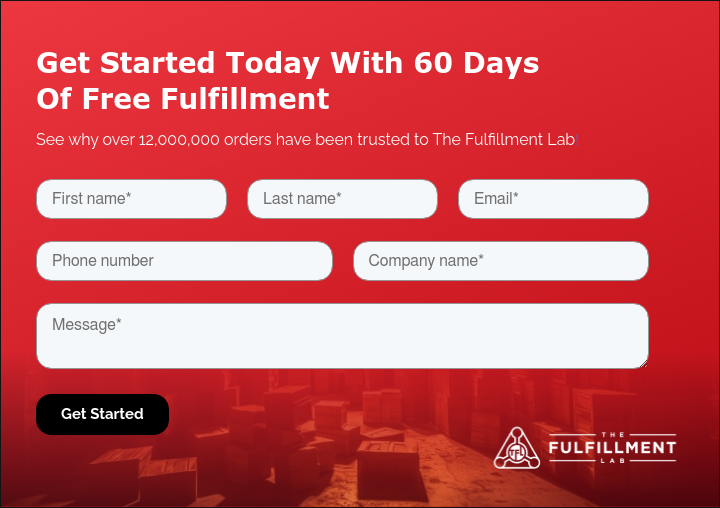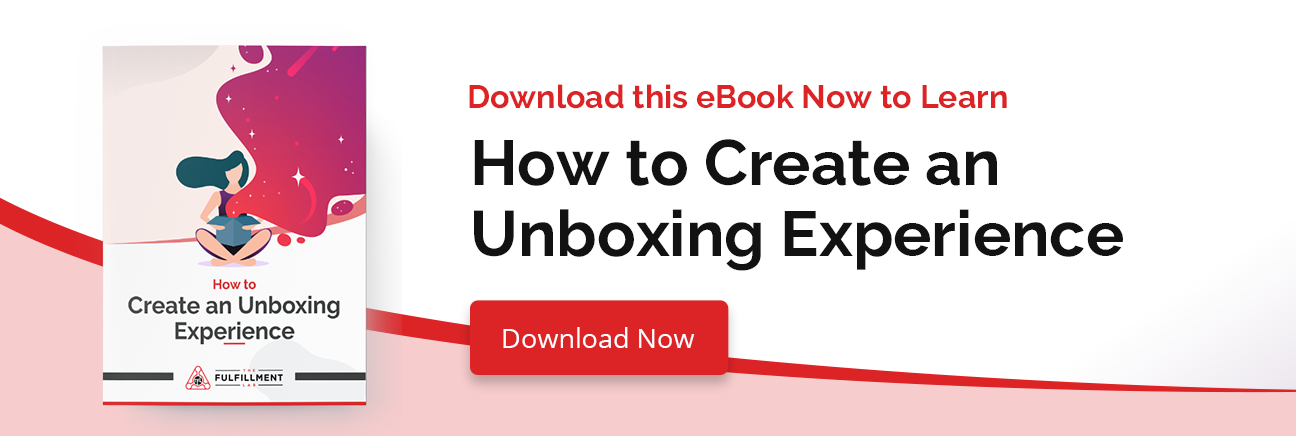8 Signs It’s Time For A New 3PL Provider & How To Transition
As an eCommerce retailer, you know that 3PL stands for third party logistics and if you’re looking to switch providers, you already know what they do (or don’t do). Perhaps you’ve simply outgrown your current 3PL. Or maybe they’re screwing up orders but still charging a small fortune. In this blog, we look at reasons to make a 3PL move, questions to ask potential new providers, and how to make a seamless transition.
Types of 3PL Providers and What They Do
Before delving into the reasons to consider a new 3PL partner, it’s important to understand the four different types of third party logistics companies and what you should expect from them. Of course, you’ll want inventory management, warehousing, and fulfillment. But over the years, the definition of a 3PL has changed to where the Council for Supply Chain Management Professionals (CSCMP) states “These days, every company that offers some sort of logistics service for hire calls itself a 3PL.” So here is what you need to know.
- Standard 3PL Providers are the lowest-cost option and offer only the most basic warehouse logistics such as storage and transportation of products.
- 3PL Service Developers provide standard storage and shipping along with IT infrastructure and management for packaging, security, tracking, and returns management.
- 3PL Customer Adapters handle nearly all logistics activities for another company from beginning to end, even providing rate maintenance and negotiation with carriers. Clients do have visibility into the processes through dashboards if they choose, but most want to remain hands-off.
- 3PL Customer Developers serve the largest companies, completely taking over a company’s logistics activities at the request of their client. They are, more or less, their clients’ logistics department.
When To Consider Switching 3PL Providers
Time for an upgrade? Need to feel more valued as a customer? Whatever your reason for considering switching 3PL providers, here are eight red flags.
1. Consistently Making Mistakes
There are always going to be some mistakes when it comes to fulfillment. But when your 3PL screws up orders consistently, this reflects poorly on your company. After all, most consumers will blame the brand they know, not the fulfillment center. Whether your logistic company is shipping damaged goods, sending products to wrong addresses, or losing products altogether, if it happens too often, it’s time to consider outsourcing to a more organized provider.
2. Failure to Evolve
Ecommerce moves at lightning-fast speeds and is constantly evolving (along with customer expectations). Is your 3PL moving just as quickly? Are they finding more efficient ways to get your product to your customer? Staying ahead of the curve with advancements in technology? If they can’t keep up and haven’t made improvements in a long time, or have failed to streamline processes since day one, they’re a reactive company. And, to be successful in this business, 3PLs need to be proactive.
3. No International Facilities
Many eCommerce companies begin with a domestic fulfillment provider. However, with the global digital buying market estimated to be at more than 2 billion, eventually, they decide they want to tap into that international audience. However, if their 3PL only operates within United States borders and doesn’t understand international trade rules and regulations, many eCommerce companies can feel stuck. If you’re ready to take a bite out of the international market, it’s best to work with a logistics company that has facilities across the globe and is an expert in importing and exporting.
4. Not Scalable Enough
Many startups and small eCommerce companies can handle logistics on their own at the beginning but eventually upgrade to a small, local third party logistics company to move the business out of their home. However, increasing sales can lead to outgrowing even the 3PL provider. If your business is scaling rapidly and your 3PL can’t handle the abundance of inventory, SKUs, or orders, it’s time to switch to a larger scale operation. You’ll want to make sure they have more than enough warehouse space for your current inventory – and future inventory as you continue to grow.
5. Lack of Support
Being able to handle returns, exchanges, and refunds is just as important as order fulfillment. However, not all 3PLs offer this service or have people available 24/7 to take calls and offer support. And that’s just for your customers; what if you need more tech support, or have an inventory emergency? It’s important to make sure that the 3PL you switch to offers the amount of customer and client support you need.
6. Outdated Technology
First things first: the 3PL provider you choose must have order management software to give you insight into each order, from the moment it’s received until the moment it’s delivered. Of course, tracking orders is pretty basic; since you’re upgrading, be sure their software can sync with your software and your shopping cart to save you from having to manually upload orders. Finally, you may want to consider a 3PL provider that allows you to create customized packaging and inserts, shipping labels, and packing slips right through your portal in their system.
7. Too Many Customer Complaints
Studies show that consumers are 92% more likely to trust their peers over advertising when it comes to purchasing decisions. So, if your website or other review sites are being bombarded with bad reviews due to the delivery experience, or you’re seeing lots of negative social media posts, this can greatly impact sales. That means it’s time to have a little sit-down with your fulfillment company!
8. Overpriced
Now, we’re not saying you want the cheapest 3PL – sometimes you get what you pay for. However, if you're paying premium pricing for fulfillment, and the company isn't providing top-notch support, transparent technology, and great customer experiences, you’re probably not getting your money’s worth. You should also be sure your 3PL has relationships with major carriers; a good partner will have negotiated rates and will pass some of the savings on to you. Lastly, it will benefit you to look for a logistics company that operates out of multiple locations, so they can ship products from the facility closest to the customer (the fewer zones a product travels across, the less it will cost).

How To Make a Seamless 3PL Provider Transition
So, how to choose a 3PL provider when making a switch? Here’s how to make it as seamless and painless as possible!
Interview Potential Logistics Companies
After you’ve researched potential providers, some of the questions you’ll want to consider asking in order to make a good 3PL comparison include:
- How are you different from our current 3PL?
- Will you be able to scale with my business as it grows?
- Will your technology work with ours? Will your software integrate with my online store?
- How will your software help me improve my business?
- How many fulfillment centers do you have and where are they located?
- Will you be able to ship from multiple locations to cut down on shipping costs and expedite deliveries?
- Can you support me as I expand internationally?
- Can you provide me with a 3PL provider cost comparison?
Review Your Supply Chain
After you’ve selected a new 3PL provider, you’ll need to look at your supply chain and adjust transit times for inventory to be sent from your manufacturer to the 3PL. This can impact when you need to reorder inventory and the quantity, especially if the new fulfillment center is a greater distance from the old one.
If you’re switching from one fulfillment center to a 3PL with multiple fulfillment centers, there will be some additional numbers to crunch, but a good logistics company will help with that. Lastly, be sure to communicate these changes with your manufacturers to ensure deliveries make it to the right fulfillment center.
Begin the 3PL Transition
Once you’ve decided to switch, you may want to move all your inventory right away (out with the old, in with the new). However, don’t jump the gun. Keeping inventory in your old fulfillment center while shipping inventory to your new 3PL helps prevent stockouts and backorders while you’re getting set up.
Once the transition has been fully completed and you’ve got a full load of inventory at the new facility, you may just want to run a sale to clear out the old inventory with your previous 3PL to avoid having to transfer the product. Just make sure your backend technology is set up to route those orders to the old 3PL until the inventory is cleared out.
Notify Your Customers
Even with a seamless transition, there’s always the potential for the unexpected, such as a temporary delay in shipping. So, let your customers know that you’re switching 3PLs to provide a better experience and more shipping options, but that it could result in a temporary delay during the changeover.
Customers prefer transparency from businesses, so make note of the change on the website, social media, and so on to keep them in the loop. This shows that you value them, and again, you can let them know the switch is designed with them in mind.
Make a Switch to The Fulfillment Lab
Although The Fulfillment Lab is usually sourced as a 3PL service developer, we don’t like to box ourselves in! We like to think of ourselves as a customizable 3PL, working with our clients to best meet their logistics and fulfillment needs. We want to be a true partner, not just a provider. Here are some of the services we offer:
- Customized mass-volume fulfillment
- On-demand product capabilities
- Proprietary fulfillment software
- Global shipping from 14 locations
- Complete order transparency
- White and private label manufacturing
- Dynamic integration with shopping carts
- Returns Management
- Lighting fast scalability
- Fulfillment marketing
You can read more about these individual services here. Have a specific question or are you ready to get the best fulfillment experience on the planet? Let’s connect!



